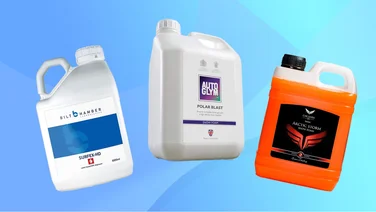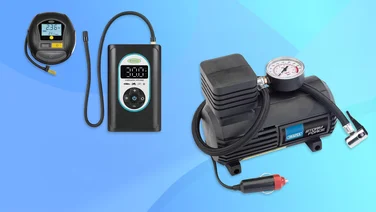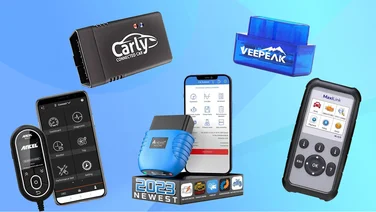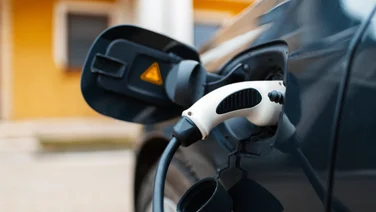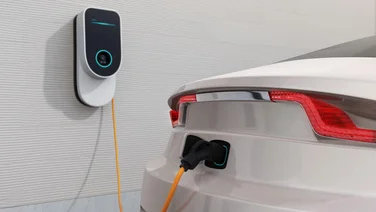To help us provide you with free impartial advice, we may earn a commission if you buy through links on our site. Learn more











- Easy to use
- Slick smartphone app
- Coding feature lets you customise your vehicle
- Annual fee to unlock all features
- Serious issues will still require professional mechanic
Modern cars are now more complicated than ever, swapping oily analogue parts for highly advanced computer systems and software. The good news is that the ECUs (electronic control units) built into modern engines allow professionals to detect faults and locate broken parts quicker than ever. The bad news is the sheer amount of information on offer can be overwhelming for the driveway hobbyist, potentially putting them off picking up a spanner altogether.
Carly wants to change all that, offering a diminutive but powerful OBD-II scanner that communicates with a slick smartphone app – itself connected to a database of deep, vehicle-specific knowledge – to offer diagnostics and solutions for most major car brands.
Many other cheaper OBD-II scanners merely throw up fault codes that then have to be researched, deciphered and investigated further. Conversely, Carly’s aim is to bypass most of this and generally be more approachable and easier to navigate. Sign up for the additional Smart Mechanic feature and Carly will offer step-by-step guides on how to check components and even make repairs yourself.
Granted, there are annual fees involved to remain subscribed to Carly’s database, and therefore get the most out of the scanner, but for anyone looking to roll up their sleeves and take on maintenance duties, it will still represent a sizable saving over garage fees.
Carly review: What do you get for the money?
You can buy the Carly OBD-II scanner for £65, but then you don’t unlock access to the database of diagnostics, Smart Mechanic and the ability to send code to the vehicle, much of which is as simple as navigating some drop-down menus.For access to that, you need to sign up to a specific automaker, in this case, it was £78 to unlock BMW. It was an extra £9 to gain access to all manufacturers and then £36 to gain access to Carly’s Smart Mechanic feature, which suggests fixes.
That came to £123, with a deal saving me £78 overall (apparently), but that included the Carly OBD-II being delivered in the post.
But here’s the kicker, this isn’t a one-time purchase and to ensure all of the features remain unlocked, which is essential if you want to diagnose or fix something, you’ll be asked to cough up a minimum of £56/yr depending on your car brand, plus all of the aforementioned extras.
On the surface, Carly looks like a bargain, but if you plan to use this for several years, you might be better off buying a professional OBD-II scanner, such as the Foxwell NT680. This does much of the same stuff, albeit in a slightly clunkier way, but you only need to pay £205 once.
READ NEXT: Best tyre inflator
Carly review: What do we like about it?
Carly is about as simple as OBD-II scanning gets and so long as you can locate the OBD port in your vehicle, you can’t go too far wrong. The interface is designed for the smartphone generation, so is full of slick-looking imagery, logos and easy-to-read text.











There are three main sections on the app home screen: diagnostics, coding and live data. The first of these runs an in-depth analysis on the health of your vehicle, reading every ECU onboard for potential issues with everything from your ABS and traction control to chassis electronics and multimedia.
Once it has performed a fairly lengthy check, the issues are then ranked and colour-coded by severity. Granted, it’s easy to get a little panicked at this point, as most vehicles will throw up a few red codes, but these can be as simple as a build-up in the diesel particulate filter (DPF) or a low oil level warning.











Coding allows owners to unlock hidden features of a vehicle and even make changes to things like the lights, the welcome display on an infotainment panel and the temperature of the heated seats. The amount of coding opportunities depends on the make and model of your vehicle, but my BMW was ripe for upgrades, with Carly only stopping short of performance tinkering for very obvious warranty and safety reasons.
Finally, live data allows you to record real-time data from the engine to hone in on potential issues by comparing it to parameter sets. This is probably as advanced as things get and tends to be used by professional mechanics, but advanced DIY-ers can equally benefit from the feature.











Above and beyond this, Carly uses its software experience to offer things like Intelligent Prediction, which analyses faults and offers a percentage likelihood of them leading to a more serious problem.
There’s also the option to analyse battery health, though this requires leaving the OBD-II scanner connected for 24 hours or more, while Used Car Mileage Check scans for mileage discrepancies between the various ECUs and reports back if it thinks there may have been mileage tampering at play.











All of this is super-easy to navigate and every time you make a change via the app, Carly backs up the standard settings for you in case you need to revert. If you’ve chosen to unlock Smart Mechanic, the app will even walk you through the steps to fix or maintain that specific item. A lot of the time, this comes in the form of one of Carly’s own step-by-step guides, but if that doesn’t exist, the app will link out to a YouTube video on the subject.
READ NEXT: Best EV tariff
Carly review: What could it do better?
The annual subscription is the first very obvious hurdle to get over, as it seems like a lot of money if you aren’t going to use it regularly.
Aside from the price, I experienced a couple of early connection issues, but this was chiefly down to me selecting the wrong model from the initial drop-down list. After this, connectivity seemed pretty stable, I did have to disconnect and reconnect once or twice during testing, though.











Initial diagnostics scans can be a lengthy process, while coding the car is also time-consuming, as only one new code can be sent at any given time, meaning multiple changes take an age.
I also found that any notion I would be able to follow Carly’s instructions and fix complex error codes myself quickly subsided. Serious issues nearly always require professional attention, anyway; I didn’t fancy taking apart the transfer case for further investigation following one error code.
Carly review: Should you buy it?
The Carly scanner is, however, overall a great product. It’s very easy to use, with the simplified colour coding system acting as a good way to prioritise any immediate issues that require addressing.
During testing, I used it extensively to code my car, personalising it and adding a few functions that were previously missing. This functionality will vary depending on the make and model of your vehicle, but I was told by a Carly spokesperson that most European brands are extensively covered. Owners of American or Japanese cars, on the other hand, might find the database lacking – you can check what’s covered on the Carly website.
What’s more, I was able to find a couple of issues I was able to take to my trusted local garage and remedy, drastically reducing the diagnostics time and saving some cash in the process. In fact, my mechanic was pretty impressed with Carly’s findings.
As a tool to scrutinise codes, then, get a good feel for the potential problem and arm yourself with info before visiting the garage, it’s fantastic. And for owners of older, high-mileage cars, Carly is a great way to keep a vigilant eye on vehicle health. Just make sure you plug it in and run scans often to get your money’s worth.

